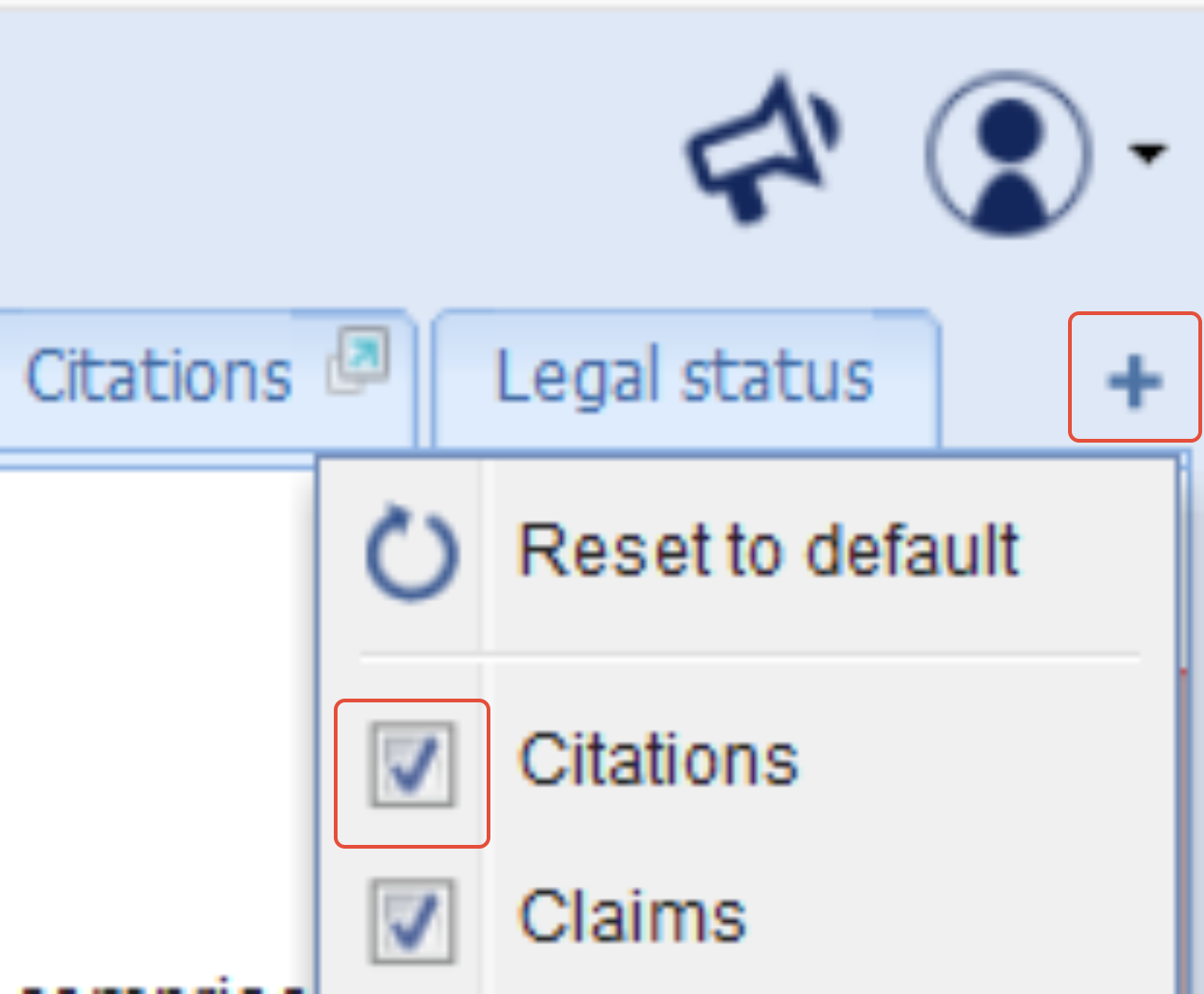Citations tab: on the right panel of the hitlist:
The Citations tab contains all the citations for a patent family or a patent/patent application:
- Cited patents
- Citing patents
- Cited literature
- Standards citing the family/patent
NB: if the Citations tab is not displayed, select it via the "+" button on the right panel on the far right side at the top:

- The Citations tab displays a summary section where you can see at a glance:
- Total number of cited and citing patents/patent families, including the number of citations with USPTO rejection details, these are hyperlinked (as applicable)
- Whether this family has cited Non-Patent Literature (NPL)
- Whether this family has been cited in standards (Standard Essential Patents – SEPs)
Click on any of the hyperlinks to jump into the appropriate section:

Cited and citing patents/patent families
The Citations tab displays for each cited/citing patent/patent family:
- Publication Number
- First Application Date
- Patent Assignee
- Citation origin
- Category code (when applicable)
- Title
For US patents and applications it also provides a link to the USPTO communication regarding the examiner rejection codes (102, 103, DBL, 101) via the "Details" hyperlink placed under the category code. Clicking on this hyperlink will open a small window with a link to the PDF.

Hitlist
From the hitlist, you can search cited or citing patents or both for the selected patents from your result set (max 80,000):

Cited: Patents backward cited by at least one member of the selected family
Citing: Patents forward citing at least one member of the selected family
The "Advanced citation search" adds the option of choosing more specific citation categories including:
- Self or non-self citations
- Citation origin (examiner, applicant or 3rd party)
- Citation category related to novelty or obviousness (categories X, Y, I, 102, 103).

Category codes
EPO Examiner citation categories:
- X : Particularly relevant if taken alone (lack of novelty or lack of inventive step)
- Y : Particularly relevant if combined with another document in the same family (non-obviousness)
- A : Technological background (no objection of lack of novelty or inventive step)
- O : non-written (e.g. oral) disclosure
- P : Intermediate document (published after priority date but before filing date of the application; used in combination with X, Y, A (e.g. XP)
- T : Theory or principle underlying the invention
- E : Earlier patent document, but published on, or after, the filing date
- D : Document cited in the application
- L : Document cited for other reasons
- Other : No relevancy code
USPTO Examiner citation categories
- 102 : Non-novel subject matter
- 103 : Obvious subject matter
- DBL: Double patenting, claim is anticipated or obvious in view of another claim in a separate patent filed by the same applicant
- 101 : "subject matter eligibility" or "Alice" rejection, claims relate to a type of invention that is ineligible for patent protection
> To know more, see article Explore results of your Citation search
Was this article helpful?
That’s Great!
Thank you for your feedback
Sorry! We couldn't be helpful
Thank you for your feedback
Feedback sent
We appreciate your effort and will try to fix the article